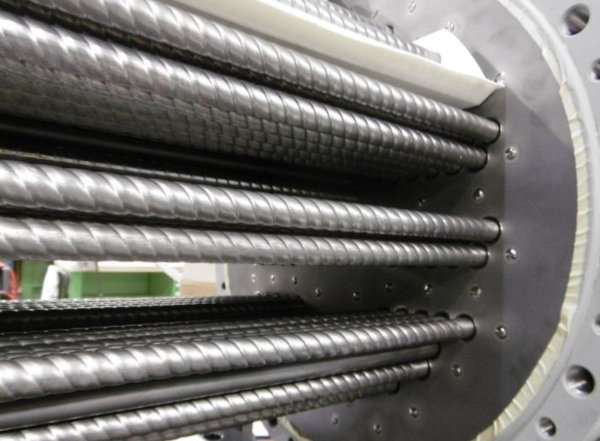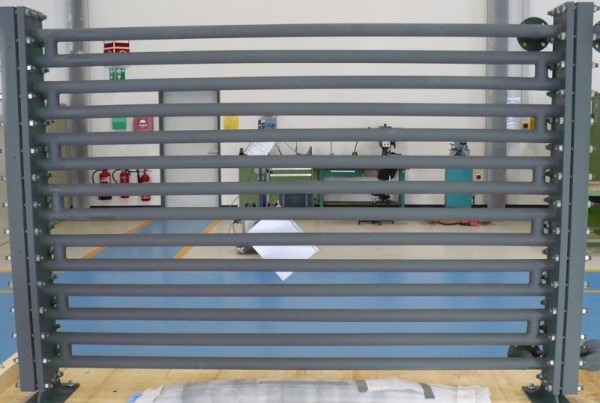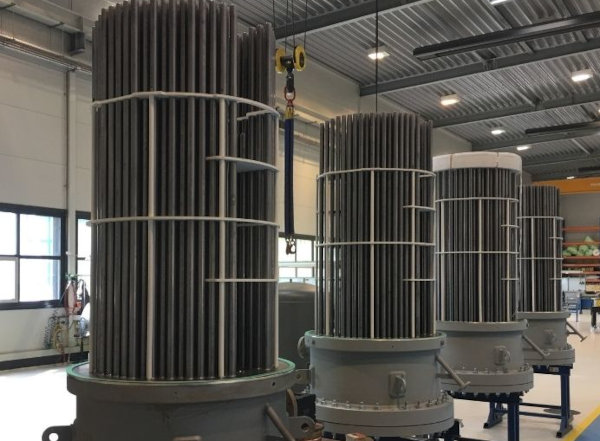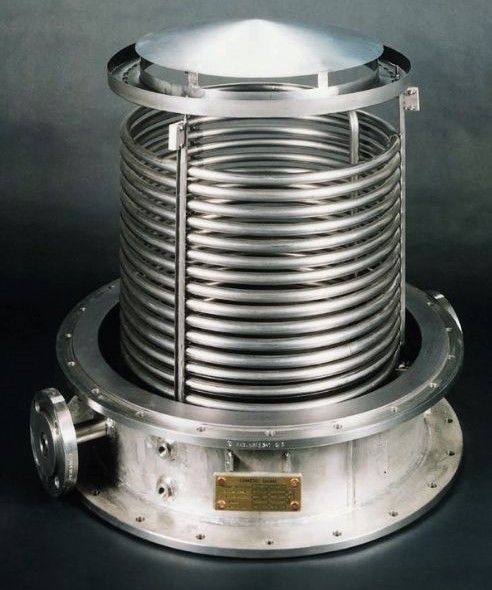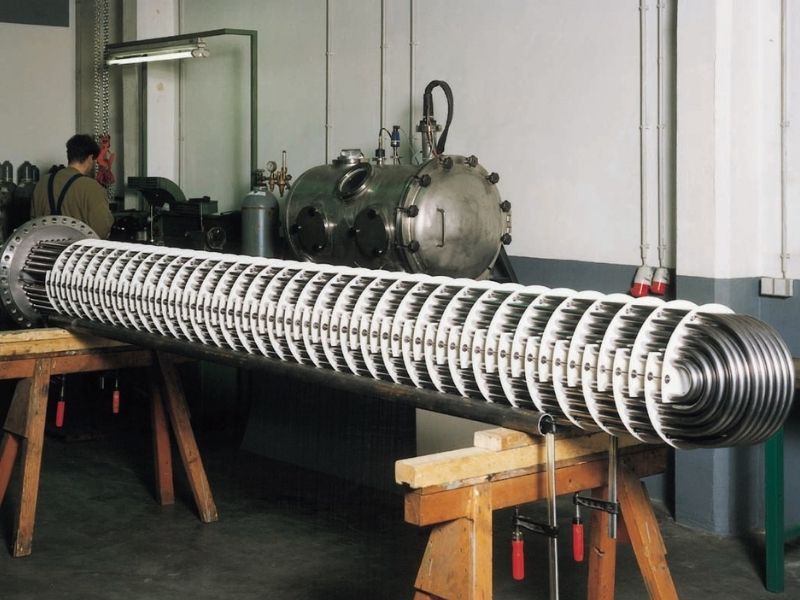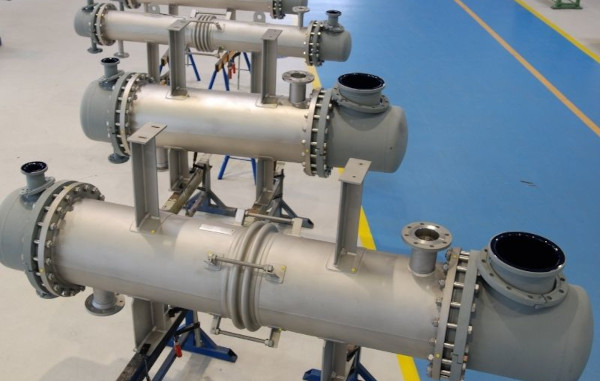
Tantalum Shell and Tube Heat Exchangers, for vertical or horizontal installation
Shell and tube heat exchangers are the most common type of heat exchanger used in chemical processes. They are well-suited for higher-pressure applications. This type of heat exchanger consists of a shell with a bundle of tubes inside it. One fluid runs through the tubes and another fluid flows over the tubes, to transfer heat between the two fluids. Mersen Tantalum Shell & Tubes Heat Exchangers are designed for condensation inside the tubes.
They can be installed horizontally or vertically.
- ¾” or 1” Ta2.5W tubes are used. They have nearly 3 times higher mechanical strength than pure Ta tubes, with the identical corrosion resistance.
- The tube (0.4, 0.5, or 0.76 mm) and the tube sheet (0.5 or 0.76 mm) wall thicknesses are adapted to meet the customers’ requirements in terms of pressure rating and cost.
- Up to 580 tubes, DN 800, 202 m² heat exchange surface
The Lip Welding design is the standard design for connection of the tubes to the tube sheets. The Flush Mount Welding design reduces the risk of fluid retention and makes for easier cleaning.



